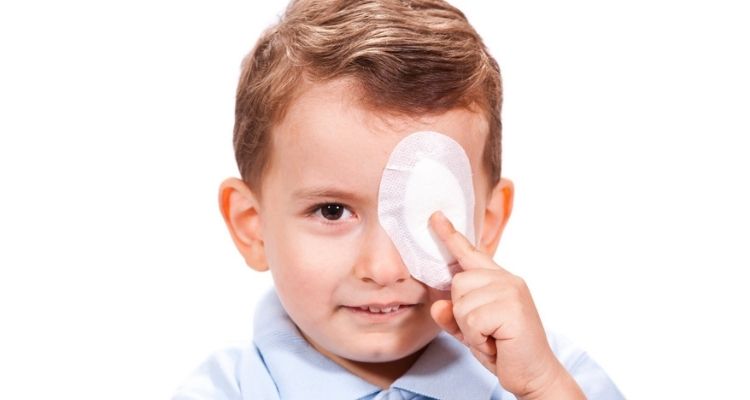

A lazy eye happens when the vision in one of your eyes doesn’t develop the way it should – this can also be called Amblyopia. Without proper treatment, your brain will slowly ignore the image from the weaker eye and it can lead to vision problems and permanent loss of vision in one eye. Amblyopia starts in childhood from birth to nine years and if identified early can be easily treated and corrected. Most common signs of a lazy eye include trouble of depth perception, which is you’re not able to tell how close or far an object is, head tilting, squinting, or shutting one eye.
Parents and children have a hard time recognizing this disorder as the condition may develop only in one eye and may not be noticeable at first. This is why it’s important not to miss your eye doctor appointments yearly. Children with lazy eyes usually learn to ignore one eye and compensate for the other eye. If you notice your child shutting one eye, squinting, rubbing their eyes often, poor eye-hand coordination, difficulty with fine eye movements, poor eye focusing skills, reduced reading and comprehension, and a cross-eyed appearance, then it’s time to take them to an ophthalmologist for amblyopia treatment.
One of the common causes of amblyopia is having different eye powers in each eye.
Amblyopia can be easily diagnosed with comprehensive eye exams. These eye exams are highly recommended for infants, and young children and ensure they develop a healthy vision. We also end up ruling out any ocular conditions. If your family has a history of the lazy eye then its better to get it checked out as soon as possible so that your eye doctor treat amblyopia. Doctors will carry our specific tests for visual acuity so that if there is a lazy eye condition, they will be able to start treatment. Tests also allow your doctor to check how each eye is performing individually. During the exam your doctor will put dilating eye drops into each eye to get a better view of the inner ocular structures – this can further help them when it comes to amblyopia treatment.
The eye drops may sting temporarily and blur your vision for a few hours but they are extremely effective at detecting a lot of eye disorders and illnesses.
Patching is the mainstay of treatment for Amblyopia. Here the good eye is covered so that the weaker eye is forced to see the world. This forced viewing gradually develops the brain centers responsible for vision.
Vision therapy is a type of treatment that is highly effective and can improve your visual skills by re-training the visual system. Through this procedure, each eye will be trained to work together and ensure a clear and comfortable binocular vision. These can be in the form of computer games or sometimes screens that children have to look at. Recent studies have shown that this type of therapy can be used to treat adults as well as children, but as adults achieving optimum results and recovery may take longer. The earlier the condition is diagnosed the better the chances and outcome are.
If your child is diagnosed with a lazy eye your doctor will recommend some treatment from the options mentioned above. It is important then to review with your doctor regularly to ensure that progress is being made and vision is gradually improving. Sometimes if your child is not allowing patching your doctor may ask you to use atropine eye drops to blur the vision in the good eye.